With centuries of work to its genre and countless millions of words in print, the history of science fiction is too vast to be summarized. It’s a field that encompasses endless themes, styles, ideas, and plots. It covers the full gamut of what it means to be human or alien. Even condensing the genre into its greatest writers is a task and a half. While far from a complete list of the greats, we’ve compiled a list of some of our favorite sci-fi authors ever, and organized it handily from A to Z!
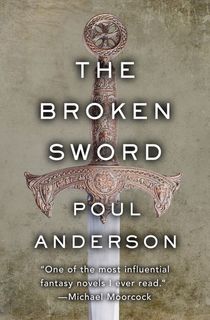
The Broken Sword
Poul Anderson won the Hugo Award seven times and the Nebula Award three times, and even had an asteroid named after him. The Broken Sword, published in 1954, is cited as a major influence on fellow sci-fi legend Michael Moorcock (he even declared it to be better than the works of J.R.R. Tolkien.) Inspired by Norse mythology, the book tells the story of Skafloc, a human raised by elves and the true son of Orm the Strong.
Taken by the elves as a child for penance of his father's crimes, Skafloc is unaware of his ancestry. Meanwhile, the being who supplanted him as Orm’s son has grown into a dangerous figure who will force their peoples into a bloody war between man, elf, troll, and gods.

Dawn
Octavia Butler’s work, which delves into questions of autonomy and radicalization, is so detailed and startling in its prescience that many think of her work as being eerily prophetic of our current times. Dawn, the first part of the Xenogenesis trilogy (also known as Lilith's Brood), centers on Lilith, a Black human woman captured by aliens after nuclear war destroyed the Earth. The aliens want to interbreed with the humans to blend their races, but this genetic trade and loss of pure autonomy might be too much for some humans to accept.
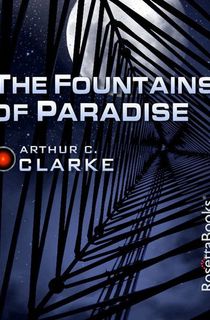
The Fountains of Paradise
Arthur C. Clarke will forever be known as the co-writer of the screenplay for 2001: A Space Odyssey, one of the most important sci-fi films ever made. But he was also a titan of the sci-fi novel. For many years Clarke, Robert Heinlein, and Isaac Asimov were known as the "Big Three" of the genre, and he even earned the moniker of "the prophet of the space age." In 1979's The Fountains of Paradise, humanity is trying to build a space elevator that will reach heights of 24,000 miles. Vannevar Morgan, the architect of this ambitious scheme, must solve a number of problems before it can come to life. He may even have to face the might of God himself.

Ubik
He may have died prematurely at the age of 53, but during Philip K. Dick's brief lifetime, he still managed to rewrite the rule book on science fiction. He was fascinated by questions surrounding human nature and our perception of reality (as he explored in his most famous book, Do Androids Dream of Electric Sheep, which became the basis for the iconic film Blade Runner.) Ubik, written in 1969, is set in a future 1992 where psychics are hired for the purposes of corporate espionage. Glen Runciter heads up his company’s latest mission when a rival team ambushes him and forces him into "half-life", a state of suspended animation.
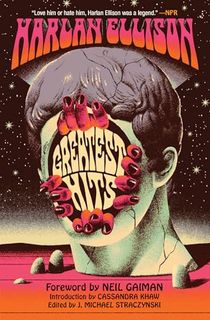
Greatest Hits (Herald Classics)
With more than 1,700 stories, books, essays, screenplays, and comic book scripts to his name, Harlan Ellison was one of the undisputed giants of sci-fi during his lifetime. Picking but one of his myriad stories is no easy task. Mefisto in Onyx, a Hugo, Nebula, and Bram Stoker Award winner, however, is of particular note. Rudy Pairis is a telepath whose riend and one-time lover, deputy district attorney Allison Roche, wants him to slip into the mind of serial killer Henry Lake "Spanky" Spanning. Why? Because she's fallen in love with him and wants to know if she has sentenced an innocent man to the electric chair.
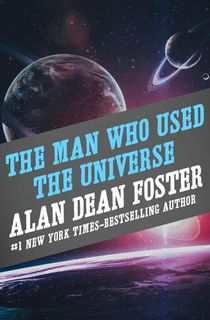
The Man Who Used the Universe
To many, Alan Dean Foster is the king of the novelization. He wrote the original novelization of Star Wars, has published many Star Trek books, and has written the book versions of movies as varied as The Thing, Transformers, Alien, and Krull. But he’s no slouch when it comes to his original sci-fi either. Kees vaan Loo-Macklin is a master criminal who gave up his life of illegal activities to become a legitimate businessman. But nobody trusts him or knows his true motives. Now, he's helping to negotiate peace agreements among warring factions. Is he after peace, power or something far worse?

Neuromancer
Without the pioneering work of William Gibson, the entire concept of cyberpunk probably wouldn't exist. Neuromancer created the blueprint for the entire genre and influenced centuries of pop culture, from Akira to The Matrix. Many of the ideas and terminology created or popularized by Gibson are commonplace today, such as “the matrix,” reality TV, and virtual communities. Henry Dorsett Case, the reluctant hero of Neuromancer, is a data thief who has been recruited for a mysterious mission by an all-powerful AI.
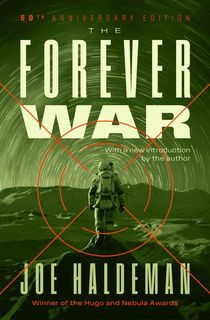
The Forever War
Joe Haldeman, a Science Fiction Hall of Fame inductee, wrote The Forever War after fighting in the Vietnam war and wanting to share his experiences through a speculative lens. William Mandella, a physics student, is conscripted for an elite task force in the United Nations Exploratory Force as part of the seemingly never-ending war against the alien Taurans. All Mandella wants to do is survive and go home, but thanks to the time dilation caused by space travel, Mandella is aging months while centuries pass on the world he left behind.

Systemic Shock
A former aerospace engineer and veteran of the United States Air Force, Dean C. Ing's spent over 50 years writing sci-fi stories and survivalist non-fiction. Systemic Shock is the first novel in his Quantrill trilogy, a sci-fi thriller set in the aftermath of the collapse of the Soviet Union.
Ted Quantrill, having survived World War 4, is ready to fight for survival. He goes undercover to infiltrate a fundamentalist polygamist sect to find if America has a future or if it must start over in the ruins of its past.

The Fifth Season
N.K. Jemisin's The Broken Earth trilogy takes place on a planet with a single supercontinent called the Stillness which, every few decades, undergoes a fifth season of extreme climate change that ravages the land and its inhabitants. The book follows three women with powers to control various energies as they try to survive amid the impending arrival of the next fifth season.

The Calculating Stars
As well as being a puppeteer who has worked for Jim Henson Productions, Mary Robinette Kowal is a celebrated SFF author with four Hugo Awards to her name. Her most famous novel, The Calculating Stars, reimagines the history of the space age through a feminist lens. In an alternate 1950s, climate change threatens to leave Earth uninhabitable. A search for a new planet beckons, and Elma York, a mathematician and pilot, is determined to be part of the program to escape into the stars, no matter how much the men in the field oppose her.

The Left Hand of Darkness
Modern sci-fi would look very different without the mammoth contributions of Ursula Le Guin. Iain Banks, David Mitchell, and Hayao Miyazaki are among the legends who have been influenced by her work. Wrote literary critic Harold Bloom, "Le Guin, more than Tolkien, has raised fantasy into high literature, for our time." The Left Hand of Darkness is a stalwart novel of feminist science fiction. The novel follows the story of Genly Ai, a human sent to the planet of Gethen to persuade them to join the Ekumen confederation. The people of Gethen live without a fixed gender, which opens up Ai's world beyond his understanding of what it means to be oneself.
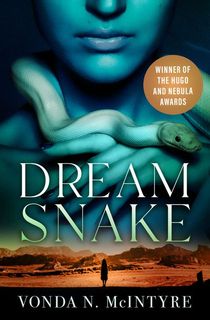
Dreamsnake
When Vonda McIntyre sent Dreamsnake to editors, it was rejected. It went on to win both the Hugo and Nebula Awards, making her only the third woman in history to receive the Hugo Award for Best Novel. Snake is a healer who uses genetically modified serpents to cure people. Her powers are prized on an Earth ravaged by nuclear war, although she is still shunned by society as a potential trickster. After one of her dreamsnakes is killed, she must travel to the city to acquire a new one, but plenty of people don't want her to succeed in her mission and will stalk her across the lands to prevent it from happening…

Ringworld
The Ringworld of Larry Niven's influential 1970 novel is a rotating ring made of alien matter that is six hundred million miles long and ninety million miles in radius. Louis Wu, a bored human being who has just turned 200 years old, is offered a job with the alien species of Pierson's puppeteers. His task: Determine if the Ringworld is a potential threat to their respective species.

Binti
Nigerian-American author and multi-award-winner Nnedi Okorafor's work blends Afrofuturism with dystopia, space opera, and the hero's journey. The Binti of the title of this short story series is the first of the Himba people ever to be offered a place at Oomza University, the finest institution of higher learning in the galaxy. She leaves the only home she's ever known to attend, but on the journey across the stars to Oozma, her ship is hijacked by the Meduse. Binti will be the only survivor of their massacre, and her interactions with the ferocious alien species will change her life.

The Prestige
You might know The Prestige best by the film adaptation directed by Christopher Nolan, but the book it was based on is special in its own right. Christopher Priest's novel takes place in 1878, and two young stage magicians become enemies as they seek to outwit one another with increasingly dramatic illusions that push them to the limits of science, magic, and their own fates.
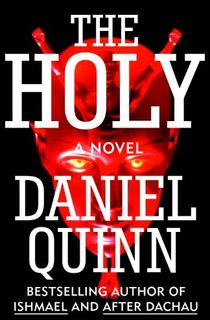
The Holy
While mostly known as a philosopher and cultural critic, Daniel Quinn was also a celebrated novelist who used fiction to explore potential positive futures for the planet. The Holy is not easily classifiable as sci-fi, thriller, horror, or spiritual fiction, but it is indicative of his skills as a storyteller. Amateur scholar Aaron hires a private investigator to look into the gods Baal, Ashtoroth and Moloch, that were worshipped for centuries before our current version of Christianity existed. What they find will forever shift their understanding of what is real and what is false.

Red Mars
The New Yorker declared Kim Stanley Robinson to be "generally acknowledged as one of the greatest living science-fiction writers." His environmentally conscious sci-fi works frequently focus on topics such as global warming and ecological change. His Mars trilogy, one of his most ambitious works, is an impeccably researched imagining of humanity's colonizing of the Red Planet. A group of 100 humans are sent to terraform Mars and face mammoth challenges in turning a foreign world into a new home for the species.

Hyperion
A mentee of Harlan Ellison who counts Stephen King among his fans, Dan Simmons is as beloved a writer in horror and fantasy fiction as he is in sci-fi. Perhaps his most famous book, 1989’s Hyperion won the Hugo Award for Best Novel and spawned three sequels. In the year 2732, the vast-reaching community known as the Hegemony of Man maintains an uneasy alliance with the TechnoCore, a civilization of AIs. On the planet of Hyperion resides a Shrike, a metallic creature that is said to grant a wish to anyone who dares to visit.
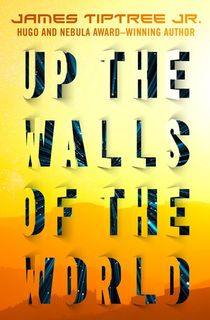
Up the Walls of the World
During their lifetime, James Tiptree Jr. was a celebrated sci-fi author, but off the page, their real name was Alice Sheldon. Under her male pseudonym, Sheldon/Tiptree helped to build a mighty legacy in the genre that legions of women in the genre have proudly carried on. Up the Walls of the World was her first novel, a story of an alien planet, Tyree, whose telepathic residents must fend off impending extinction. On Earth, a group of humans with psychic powers are part of a secret military experiment, and now the Tyrenni want to take over their bodies and minds.
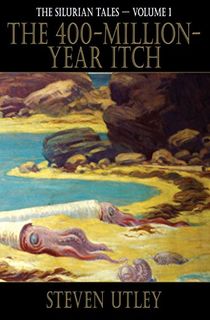
The 400-Million-Year Itch: Silurian Tales Volume 1
In the 1990s, Steven Utley was described as "maybe the most under-rated science fiction writer alive." He won various awards, was published in Asimov's Science Fiction, and worked alongside the likes of George R.R. Martin. His Silurian Tales, a collection of short stories written for various magazines and collections, was his magnum opus. In them, travelers journey via a wormhole to a prehistoric age 400 million years in the past, long before even the dinosaurs roamed the planet. How do you survive in The Age of Mud and Slime?

Journey to the Center of the Earth
Modern sci-fi simply would not exist without the ground-breaking and pioneering work of the legendary Jules Verne. In perhaps his most influential work, first published in 1864, an adventurous geology professor decides to follow the guide in a centuries' old manuscript that claims to show a route to the Earth's core, and a fantastical world of creatures well beyond human comprehension.

To Say Nothing of the Dog
The winner of ten Hugo Awards and six Nebula Awards, Connie Willis is one of the undisputed titans of the genre, and also one of its funniest writers. Her Oxford time travel series depicts the lives and mess-ups of a group of history students who journey into the past for a first-hand view of events. To Say Nothing of the Dog follows overworked student Ned Henry as he is forced into the Victorian era to fix the errors of another time traveler before the future is changed forever.

How to Live Safely in a Science Fictional Universe
National Book Award-winner Charles Yu writes sharply satirical sci-fi as well as working on TV shows like Westworld. He's the lead of this 2010 novel, a time travel technician who works to ensure that those who mess with the space-time continuum don't change the past. Accompanied by TAMMY, an operating system with low self-esteem, and Ed, his non-existent dog, Charles finds the secrets to his life in the very book he's a character in!

The Blackcollar Series Books 1–2
Perhaps best known for his canon-redefining editions to the Star Wars series with the Thrawn saga, Timothy Zahn is a celebrated sci-fi writer in his own right. His 1983 debut novel, set in the 25th century, follows the Blackcollars, an elite genetically-enhanced human task force designed to take on the invading Ryqril empire. Allen Caine is sent to the planet Plinry to uncover the location of five starships and the remnants of the Blackcollars so that he can defeat the Ryqril race once and for all.
















